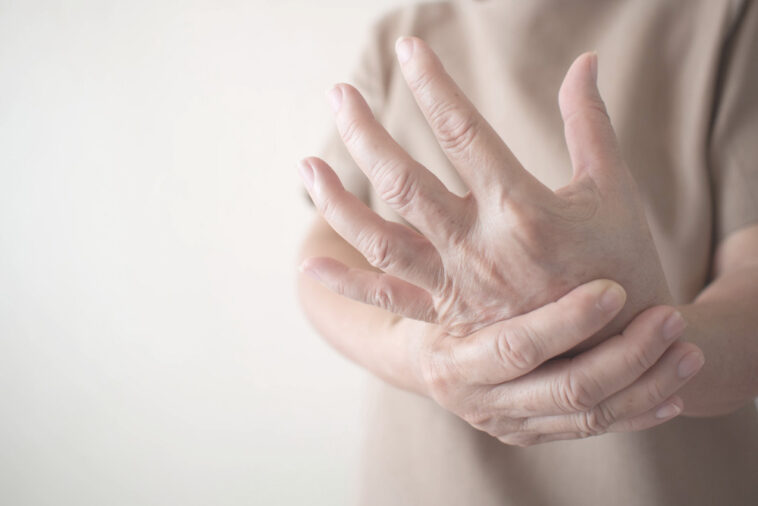What Foods Are Best for Cold Hands and Feet Raynaud’s phenomenon?
Cold hands and feet Raynaud’s phenomenon may be greater than simply uncomfortable. This condition, known medically as Raynaud’s phenomenon, impacts the blood vessels inside the extremities whilst uncovered to cold temperatures or strain. Besides being painful or irritating, chronically cold hands and feet also can suggest an underlying fitness situation. Making nutritional modifications to embody warming meals and vitamins can help enhance motion to the fingers and toes and relieve uncomfortable symptoms and signs and symptoms.
Raynaud’s phenomenon Cold Hands and Feet Symptoms and Causes
Some human beings tend to just get extraordinarily cold fingers and feet, particularly people with thin skin that couldn’t keep warmth well. However, when it’s occurring regularly and accompanied by means of coloration changes in the skin (turning white, blue, or red), it can characterize Raynaud’s phenomenon. This disruption in blood go with the flow is frequently brought about by using cold exposure or emotional stress. #Raynauds #ColdHands #ColdFeet
Additional symptoms can include:
- Numbness or tingling sensations
- Reduced grip strength
- Pain or stiffness
- Skin sores or ulcers
While mild cases may just require keeping the extremities warm, severe or persistent cases can limit mobility and activities. When continual cold arms and feet disrupt daily existence or suggest an underlying autoimmune circumstance, nutritional and way of life treatments can help enhance flow.
-
Ginger
This warming spice can assist growth blood glide and might lessen infection. Ginger improves numerous markers of cardiovascular fitness, inclusive of Low-density lipoprotein cholesterol and blood pressure tiers. It additionally minimizes platelet aggregation to promote wholesome blood glide and save you peculiar clotting. The phenolic compounds found in ginger exhibit antioxidant effects within blood vessels to reduce damage as well.
Try: Adding fresh or floor ginger to stir fries, soups, smoothies, marinades, baked goods, and teas.
-
Garlic
Like ginger, garlic offers anti-inflammatory and antioxidant support to enhance circulation. Specific sulfur compounds in garlic can help blood vessels expand to improve blood flow. One study showed that regularly consuming garlic powder tablets helped decrease the frequency of Raynaud’s attacks. The antioxidant properties also prevent oxidative damage to blood vessels over time.
Try: Using garlic powder generously to season foods or taking an aged garlic supplement if the odor is unpalatable.
-
Cayenne Pepper
Capsaicin, a compound found in cayenne and other chili peppers, as soon as ingested, stimulates vasodilation (dilation of blood vessels), which increases blood waft to the periphery of the body through warming blood to the finger and feet this reasons temporary comfort from the cold and ache. Eating spicy foods over an extended time period can help reduce the severity of symptoms.
Try it: Add cayenne pepper or a touch hot sauce to soups, eggs, or pasta dishes. Tolerating the highly spiced warmness can permit for more cayenne for use for extra effect.
-
Cinnamon
Cinnamon is taken into consideration a “warming” spice in herbal remedy that can briefly raise frame temperature and enhance blood flow to the hands and feet. The compounds eugenol and cinnamaldehyde deliver cinnamon its therapeutic antioxidant and anti-inflammatory abilities as well, which shield blood vessels. For Raynaud’s alleviation specifically, one small take a look at discovered that taking cinnamon dietary supplements reduced severity and frequency of assaults.
Try: Sprinkling cinnamon on coffee, oatmeal, baked goods, and smoothies or taking pills with food.
-
Turmeric
The main active compound in turmeric, curcumin, has beneficial effects on vascular health and blood circulation. It exhibits antioxidant, anti-inflammatory, antithrombotic (reduces blood clotting), and lipid-lowering activities. One study on rheumatoid arthritis patients found that taking turmeric daily improved both blood flow and symptom relief. The anti-inflammatory abilities of curcumin also help open inflamed blood vessels.
Try: Cooking with the spice turmeric in curries, soups, and eggs or stirring it into non-dairy milk for golden milk. Curcumin supplements are also widely available.
-
Salmon
Cold water fish like salmon are wealthy resources of omega-3 fatty acids EPA and DHA. These anti-inflammatory fat have been proven to lessen markers of blood vessel irritation and decrease cardiovascular risk. Omega-3s also make blood platelets less “sticky” to improve movement and can help control related chronic ache. Eating salmon a few times per week is recommended for Raynaud’s relief.
Try: Grilling, baking, or pan frying fresh salmon fillets for dinner with spinach, roasted veggies or potatoes. Canned salmon also provides the beneficial oils.
-
Walnuts
Walnuts provide a plant-primarily based supply of alpha-linoleic acid: a sort of anti-inflammatory omega-3. Regularly consuming walnuts or their oils can beautify vascular fitness and growth overall blood flow in accordance to research. This in turn can offer more warmness blood to the extremities to alleviate uncomfortable signs and symptoms of Raynaud’s phenomenon.
Try: Snacking on a small handful of raw walnuts each day, topping salads with them, or grind them into meal for baked goods.
-
Paprika
Similarly, to cayenne pepper, paprika contains circulation-boosting capsaicin that triggers vasodilation upon consumption. This spice made from dried, ground red peppers provides a less-intense warming effect for those sensitive or unfamiliar with spicy heat. One animal study showed improved markers of vascular and heart health after being fed paprika extract as well.
Try: Generously sprinkle smoked paprika onto soups, eggs, meat, roasted veggies or stir into hummus or oil for dipping bread.
-
Chia Seeds
Providing a trio of vascular-protective vitamins, chia seeds are wealthy in omega-3 fat, protein, and fiber. The ALA omega-3s lessen irritation whilst the protein and fiber enhance levels of cholesterol and modify blood sugar spikes. High blood pressure and diabetes have bad effects on peripheral circulate, so regulating these metabolic markers complements blood float.
Try: Adding chia seeds into smoothies and oatmeal or making chia seed pudding via soaking in coconut milk.
-
Leafy Greens
Dark, leafy greens like kale, spinach, and collards are high in nitrate, which gets converted into nitric oxide in the body to promote vasodilation and blood flow. Multiple studies confirm leafy greens improve vascular health, reduce leg pain with activity, and lower risk for diabetes complications and cardiovascular disease – all commonly associated with chronically cold extremities.
Try: Adding more spinach, kale, arugula, Swiss chard, beet and turnip greens into smoothies, soups, salads, sides, and main dishes via sautéing and roasting.
Lifestyle Tips to prevent Raynaud’s phenomenon Cold Hands and Feet
- Stay warm in cold weather by wearing gloves, socks, and layered clothing
- Use lotion after washing hands and feet to prevent dry, cracked skin
- Do regular hand and foot exercises to stimulate blood circulation
- Quit smoking and manage emotional stress levels with yoga, meditation, etc.
- See a doctor if symptoms don’t improve to check for underlying conditions
Adding more warming, circulation-boosting foods into your diet like ginger, garlic, and omega-3s can help relieve unpleasant symptoms of chronically cold hands and feet over time. Practicing self-care, managing stress, and becoming more physically active also improves blood flow. If problems persist despite lifestyle changes, visit your doctor to address potential autoimmune conditions or nerve damage that requires treatment.
Stay on top of the latest nutrition and health news. Click Here.





